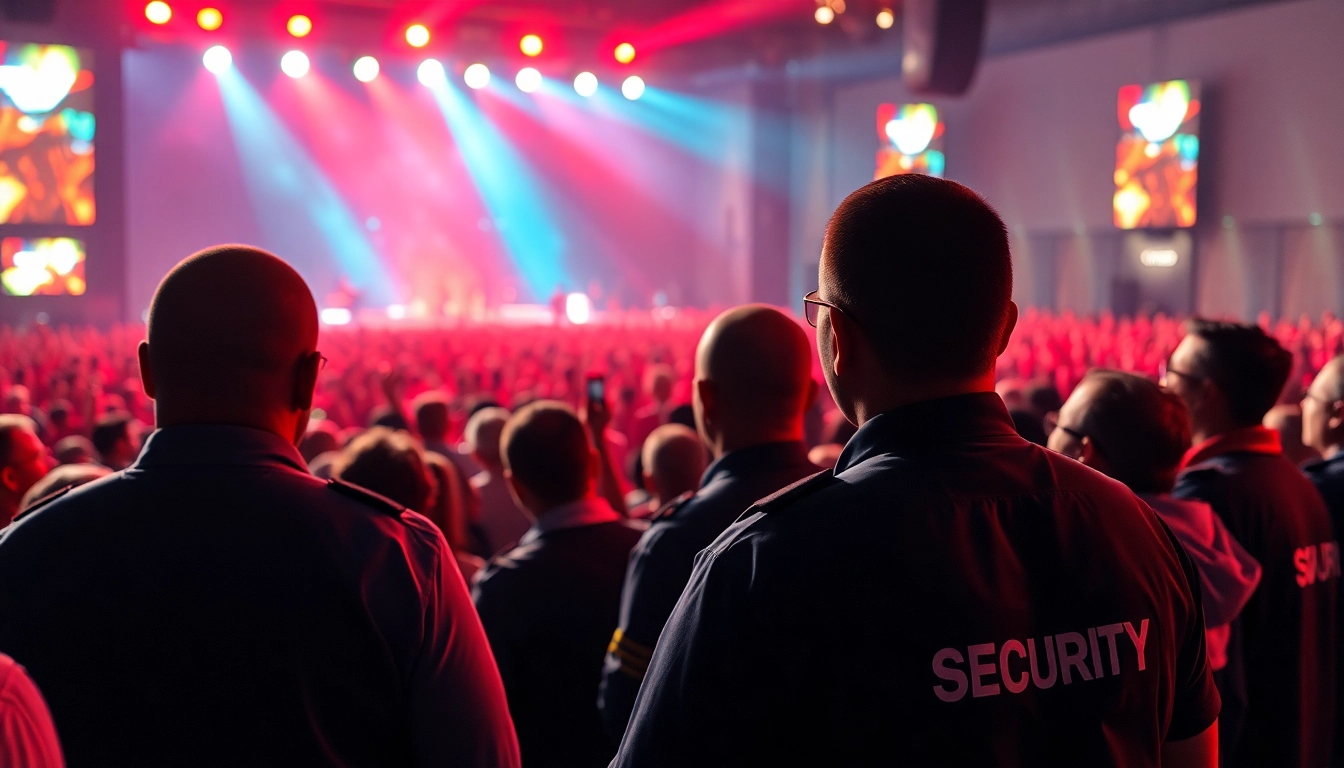Understanding the Role of Concert Security
Concert security plays a pivotal role in ensuring the safety and smooth operation of live events. As concert attendance continues to grow, so does the importance of effective security measures. This article delves into the multifaceted aspects of Concert Security, exploring its essential responsibilities, the need for thorough training, and the overall significance of preparation in the field.
What is Concert Security?
Concert security encompasses the strategies and personnel involved in maintaining a safe environment for both artists and attendees during live music performances. This field not only includes traditional security measures like monitoring entrances and exits but also encompasses crowd management, emergency response, and the overall atmosphere of safety.
Key Responsibilities of Concert Security Personnel
Concert security personnel have a range of responsibilities that can vary based on the size and type of the event. Major responsibilities include:
- Access Control: Managing entry points to ensure that unauthorized individuals do not gain access to restricted areas.
- Crowd Management: Ensuring the safe interaction of attendees, helping to prevent overcrowding and managing any potential issues that arise during the concert.
- Emergency Response: Being prepared for any emergencies that may occur, including medical emergencies, evacuations, and other unforeseen incidents.
- Collaboration with Local Authorities: Working closely with law enforcement and emergency services to ensure that all necessary precautions are in place.
Importance of Training and Preparation
The efficacy of concert security is heavily reliant on the training and preparation of personnel. Regular drills and training sessions help security staff react promptly and effectively to emergencies. Furthermore, understanding potential threats and situational contexts enables concert security to better manage crowds and ensure a positive experience for all attendees.
Planning for Concert Security
Effective planning is essential in establishing a security framework robust enough to handle the demands of a live concert, which starts long before the doors open.
Assessing Risks and Vulnerabilities
Before any concert, a thorough risk assessment should be conducted. This involves identifying potential vulnerabilities that might arise during the event. Factors that affect risk levels include the venue’s size, historical data of past incidents, and the expected audience demographic. Security teams must collaborate with venue management to determine these factors accurately.
Developing a Comprehensive Security Plan
Once risks are assessed, the next step involves creating a comprehensive security plan, which outlines protocols for access control, emergency management, and communication strategies. This plan should be tailored to the specific concert, considering elements such as expected attendance, artist profiles, and any controversial topics associated with the performance.
Coordination with Event Stakeholders
Coordination among various stakeholders, including promoters, venue operators, and local law enforcement, is critical. Regular meetings should take place to discuss the security strategy and allocate roles and responsibilities. This synergy ensures seamless communication throughout the event and prepares teams to act swiftly should any issues arise.
Implementing Effective Concert Security Measures
To successfully implement concert security, a mix of strategic planning and real-time management is essential. This includes concrete measures that could mitigate risks and enhance attendee safety.
Access Control Strategies
Access control is the first line of defense in concert security. Implementing a range of strategies such as ticket scanning, RFID wristbands, and designated entry points can significantly reduce unauthorized access. Staff should be trained to spot counterfeit tickets and manage entry queues effectively, minimizing wait times and enhancing overall fan experience.
Crowd Management Techniques
Crowd management is crucial to maintaining safety during a concert. Security should establish clear pathways for both entry and exit, ensuring that audience members can evacuate swiftly if necessary. Techniques such as deploying barriers, assigning staff to specific zones, and utilizing signage can guide attendees and minimize confusion.
Emergency Response Preparedness
Emergency situations can arise unexpectedly in any public event. Therefore, having a well-defined emergency response plan is essential. This plan should include clear protocols for various scenarios such as medical emergencies, active shooter situations, or severe weather events. Security personnel should be trained in these protocols and conduct regular simulations to ensure readiness.
Technology in Concert Security
The rise of technology in security measures has introduced innovative solutions that enhance traditional methods. Integrating tech effectively can bolster overall concert safety.
Using Surveillance Systems
Surveillance systems play a crucial role in monitoring events. These systems include CCTV cameras strategically positioned throughout the venue to provide real-time surveillance. Security personnel should actively monitor feeds to identify potential threats or disturbances early on, enabling rapid intervention.
Communication Tools for Security Teams
Effective communication is vital for concert security. Utilizing radios, headsets, and mobile apps allows security personnel to share updates and coordinate responses in real-time. Establishing clear communication channels prevents misunderstandings and ensures that all team members are aware of their roles during the event.
Innovative Security Technologies
Emerging technologies such as facial recognition software and drones are changing the landscape of concert security. These tools can enhance crowd monitoring and improve access control measures. However, it’s essential to balance technological advancements with privacy concerns and local regulations to maintain public trust.
Evaluating Concert Security Performance
Post-event evaluations are crucial to identify the strengths and weaknesses of the concert security measures implemented. This reflection informs future events and ensures continuous improvement.
Metrics for Success in Concert Security
To gauge the effectiveness of concert security, specific metrics should be analyzed. Key indicators include the number of incidents reported, response times to emergencies, and feedback from attendees. Surveys and interviews with stakeholders can also shed light on perceived safety and areas for improvement.
Post-Event Reviews and Improvements
Conducting post-event reviews is essential in refining the security strategy. This involves gathering input from all security personnel involved and reviewing incident logs. These discussions can highlight successful tactics and identify any shortcomings, leading to actionable improvements for future events.
Building a Culture of Safety in Events
Finally, building a culture of safety among all event participants is vital. Emphasizing safety protocols during pre-event briefings and engaging attendees in discussions about personal safety can foster an environment where everyone contributes to concert security. Signage and announcements at the event can reinforce these messages, encouraging vigilance among attendees.








